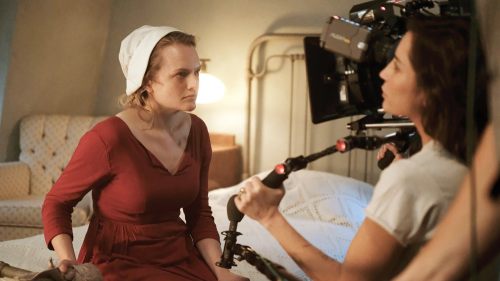Sundance Review: 78/52
If you love Psycho, love Hitchcock, hell, if you love cinema, then 78/52 will feel like nothing so much as a cherished gift. Alexandre O. Philippe (The People vs. George Lucas, Doc of the Dead) spends ninety minutes dissecting a two-minute scene, and in doing so reveals the depth of Hitchock’s genius in a way a much broader discussion likely couldn’t.
The scene in question, of course, is Psycho’s shower scene. "78/52" refers to the number of camera setups and cuts in this two-minute scene, two minutes that changed cinema forever. 78/52 lovingly examines this scene from every angle: the narrative psychology behind it, the technical approach, Hitchock’s own brilliance and pathology, the scene’s incomparable influence on future films and television shows and even the rating system.
We hear from everyone from Janet Leigh’s body double Marli Renfro to Jamie Lee Curtis. Horror luminaries like Guillermo del Toro, the SpectreVision guys, Karyn Kusama and Neil Marshall all weigh in. The talking heads are mainly filmed in black and white, with the participants watching Psycho on a small, vintage television in an old-fashioned hotel room, then commenting on what they’ve just seen. It brings an immediacy to the testimonials, giving them an added weight that adheres nicely with the rest of the film.
Because the rest of the film carries so much weight. We see a ton of footage from Hitchcock’s interviews and Alfred Hitchcock Presents, a reminder that the director cheerfully spilled the secrets behind this and every other one of his cinematic marvels. He never hesitated to explain how and why he did something, with the understanding that no amount of knowledge could ever lessen the impact of his filmmaking. He was right – I left 78/52 much better-informed about the making of Psycho’s shower scene, but watching the scene later, I still found myself afraid. Knowledge isn’t power here – it’s just context.
The context only adds to the scene’s force, in fact. Philippe brings in an art historian to discuss the painting Norman Bates removes to spy on Marion Crane. It’s a version of Susanna and The Elders, a biblical story of a beautiful woman and two voyeurs that has been rendered dozens of times on canvas – but Hitchcock chose the one version in which the elders not only spy on Susanna but assault her, one of a hundred small hints Hitchcock wove into the fabric of his film to warn us of what we’re about to see.
We’re read the shower scene from both the book and the screenplay over Saul Bass’ storyboards. We see a demonstration of knives hacking into melons, every possible type of melon, and then we're left to picture the moment when Hitchcock opened his eyes in the sound studio and said, simply, “Casaba.” We hear from Walter Murch how he distinctly edited the bathroom scene in The Conversation as an inverse of the shower scene in Psycho. We hear from Martin Scorsese that he directed Jake La Motta’s worst beating as a shot-for-shot homage to Marion’s murder.
Philippe starts somewhat macro – Robert Bloch’s book, the casting process, the narrative build-up – and, by the end of 78/52, goes very, very micro. We’re pulled into every one of those 78 setups and 52 cuts. We’re with Marion as she wrenches the shower curtain out of the rings, as the life leaves her fingers and the camera pulls slowly away from her unblinking eye – and we’re with the fussy, slim-suited little man who masterminded it all.



